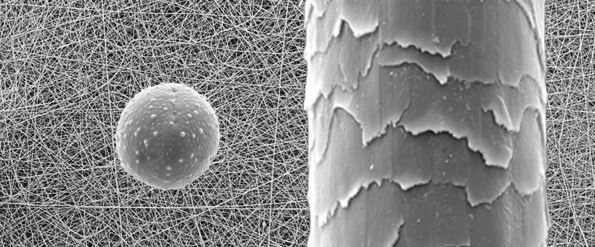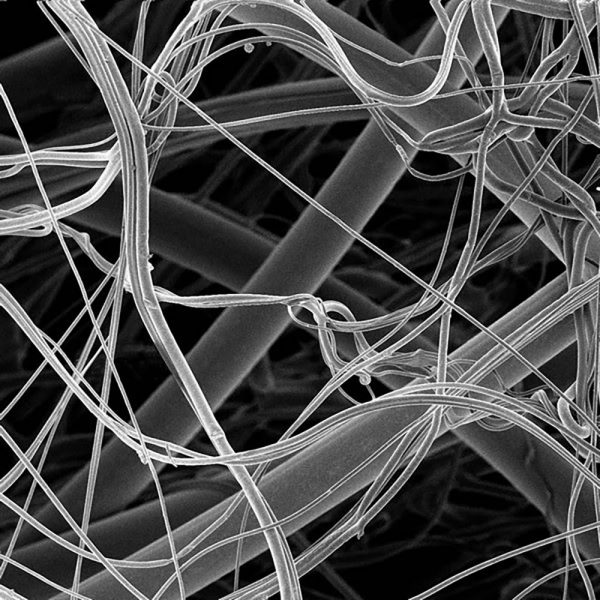Superfine or Ultrathin Nanofibers PhD Nano _ Microelectronics
Researcher and author: Dr. ( Afshin Rashid)
Note: In general, nanofibers are defined as one-dimensional nanomaterials that have a diameter of less than 1 micrometer (1000 nanometers) and a aspect ratio (length to diameter ratio) greater than 100. These fibers are also referred to in some sources as superfine or ultrathin.
When the fibers are in the range of 100 to 1000 nanometers in diameter, they are also called sub-micron fibers. In diameters between 5 and 500 nm, nanofibers have a surface area between 10 and 1000 m2 / g.
Nanofibers are groups of fibers that vary in size from nanoparticles and can be made from a variety of polymers, while having very different properties and applications. Examples of natural polymers include collagen, cellulose , creatine, gelatin, and polysaccharides such as chitosan and alginate. Polymer chains are connected by covalent bonds and the diameter of nanofibers will vary according to the type of polymer used and the production method, but all nanofiber polymers have very special properties such as high surface to surface ratio, many holes. They have high mechanical strength and flexibility in operation, which are what distinguish them.The production of nanofibers is done with the help of many different methods, including electrospinning, elongation, self-assembly and mold synthesis, as well as phase separation by heat. Electrospinning is the most common method used to produce nanofibers because it is very simple to do and can produce a variety of continuous nanofibers in high volumes and from very different polymers. Features of the electrospinning method include the ability to produce very thin fibers with controllable diameters, compositions, as well as tailored orientations. This flexibility makes it possible to control the shape and arrangement of the fibers in such a way that different structures can be formed according to the requirements of the final product. Using modern smelting processing methods that are also suitable for large-scale industrial production.
When the fibers are in the range of 100 to 1000 nanometers in diameter, they are also called sub-micron fibers. In diameters between 5 and 500 nm, nanofibers have a surface area between 10 and 1000 m2 / g.
Researcher and author: Dr. ( Afshin Rashid)
PhD in Nano-Microelectronics




